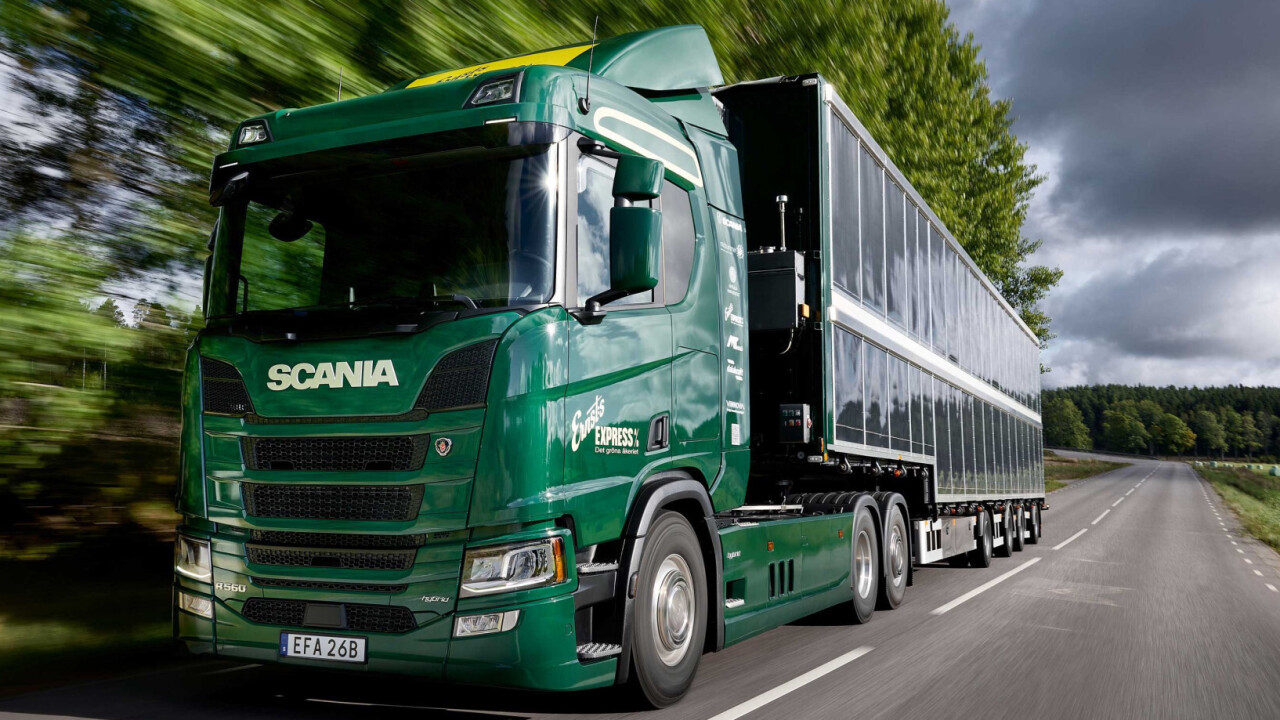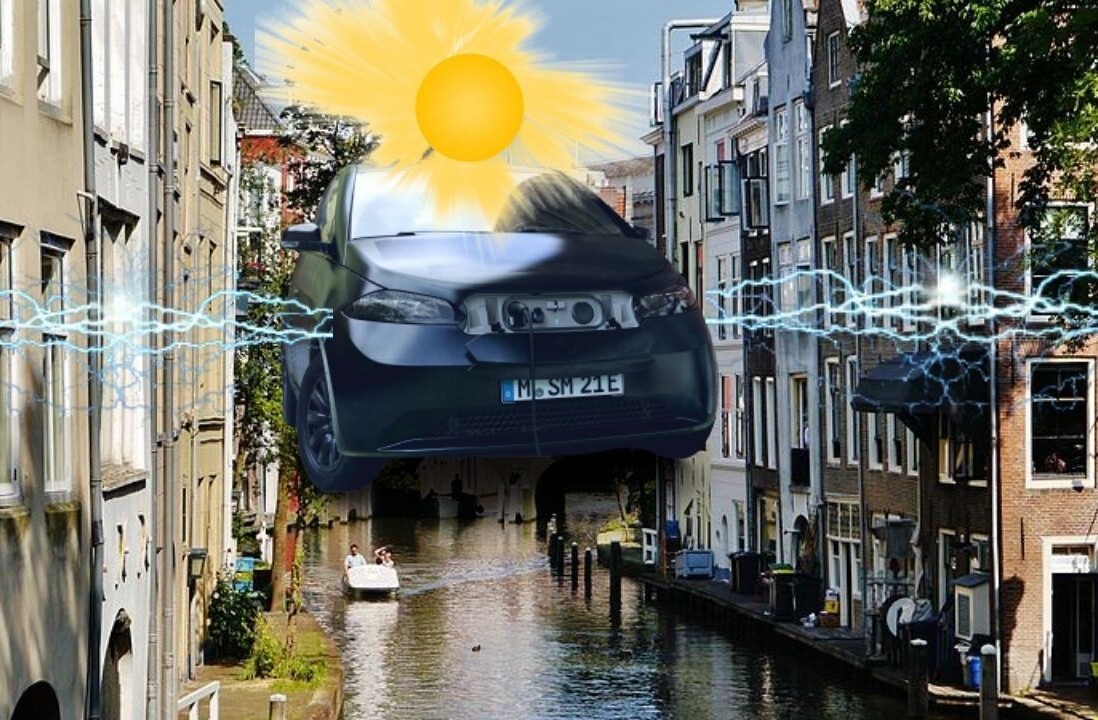
Late last week, Sweden’s Scania revealed a world-first hybrid semi-truck covered in solar panels. Because of its self-produced energy, the unique prototype has the potential to reduce both operational costs and CO2 emissions of heavy transport.
The hybrid truck’s trailer is covered in 100 square metres of solar panels that are plugged into an electrical system carried on board. It is being deployed in a research project to examine how much solar energy such a configuration can generate, and how much it is possible to lower CO2 emissions through the use of the attached photovoltaic panels.
As it swooshes silently down the Scandinavian countryside roads, it looks like something of a transplant from a not-so-distant future. But, solar-powered trucks and… Sweden?
“If you can make it work here with solar power in Sweden, you can make it work anywhere,” said Eric Falkgrim, project manager for the company’s solar-powered truck development — a fact to which anyone who has ever lived through November in Sweden can attest. Falkgrim added that if the technology is viable in the Nordics, then that would confirm the widespread validity of the project.
Academia and industry collaboration
Inspired by the progress made in lithium-ion battery tech, a few years back the company’s research and innovation department asked itself if solar panel technology could also grow both more efficient and come down in cost enough for a self-catering photovoltaic truck to make sense.
Following an initial pre-study concluded in 2019 to determine feasibility, Scania received funding from the Swedish state innovation agency Vinnova. It then launched a full-scale project in January 2021, with the efficient and light-weight solar cells developed by Uppsala University.
“This is an exciting project where academia and industry together try to decrease the climate impact from truck transports. The results from this unique truck will be very interesting,” said Erik Johansson, project manager and Professor of physical chemistry.
Solar tech on the move
The plug-in hybrid truck/tractor has all the “regular systems” — including 100 kWh energy storage. Meanwhile, the trailer has an additional energy storage capacity of 200kWh, functioning as a “power bank” charged by the solar panels. But naturally, dressing a trailer in photovoltaics comes with a whole specific set of engineering challenges.
“You have to bear in mind that solar cells are not made to be moving around town in a vehicle. They’re designed to sit stationary on top of a house for 20 or 30 years. We’ve had to address safety challenges in putting solar panels on a vehicle,” Falkgrim added.
However, he also noted that it was still a research project, and would allow for the possibility of technical snags needing to be fixed along the way.
“It’s fairly involved from a technical point of view, but we don’t have that pressure of it being a full-scale project where we’re producing something that will be sold globally to hundreds and thousands of customers. It’s a research project that’s about seeing if the solution makes sense, and so far we believe it does.”
To hear more about what the experience has been like for Scania engineers working on the project, and see more images of the truck rolling past red little houses and fields, you can check out the video below:
Get the TNW newsletter
Get the most important tech news in your inbox each week.





